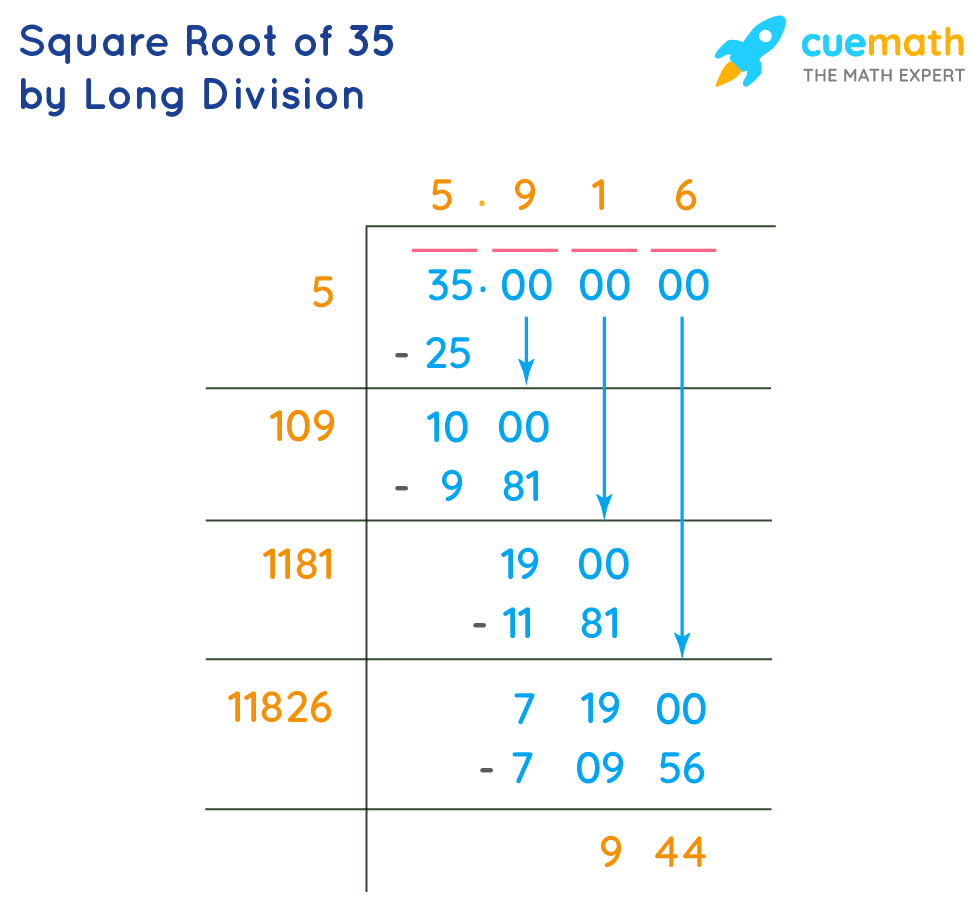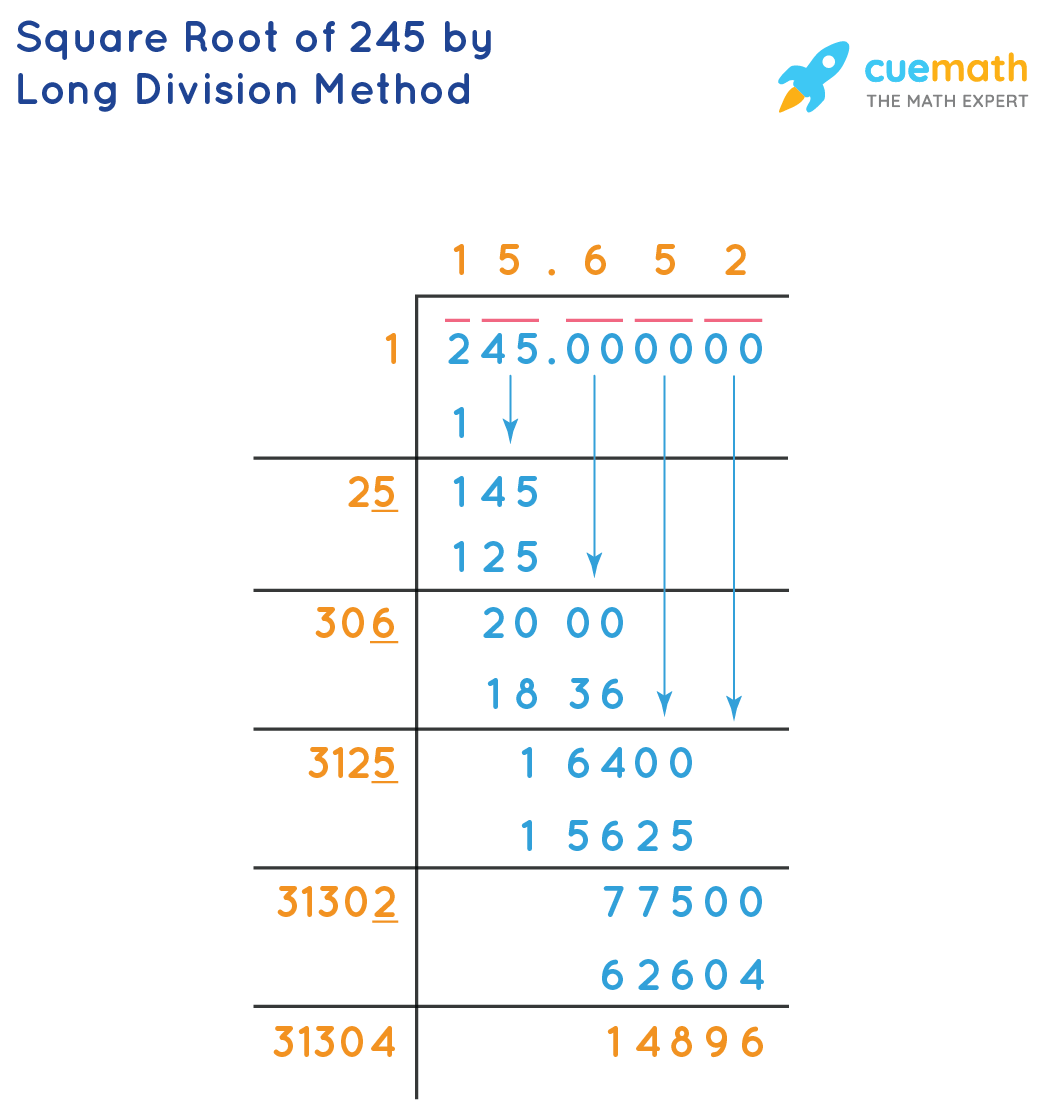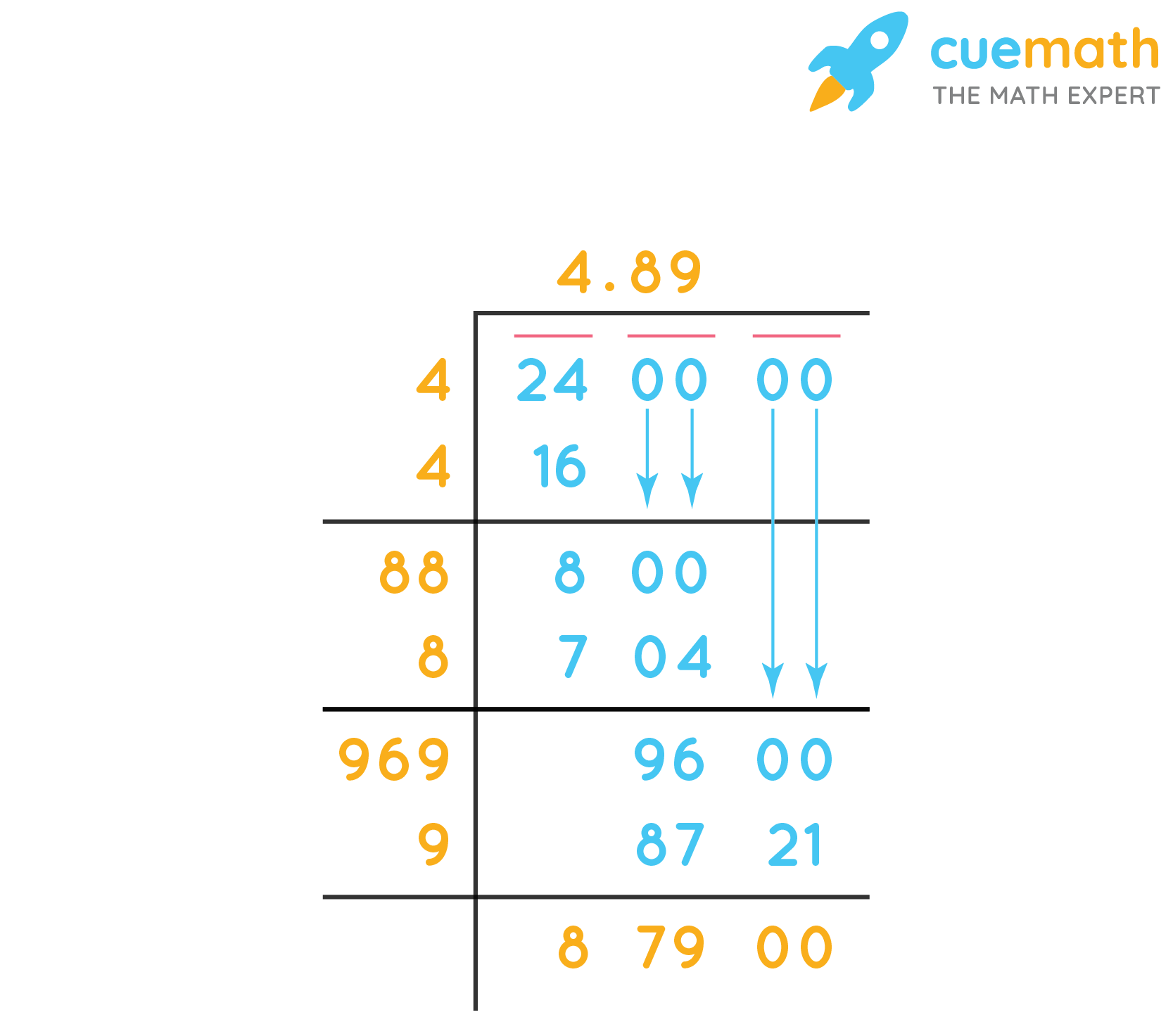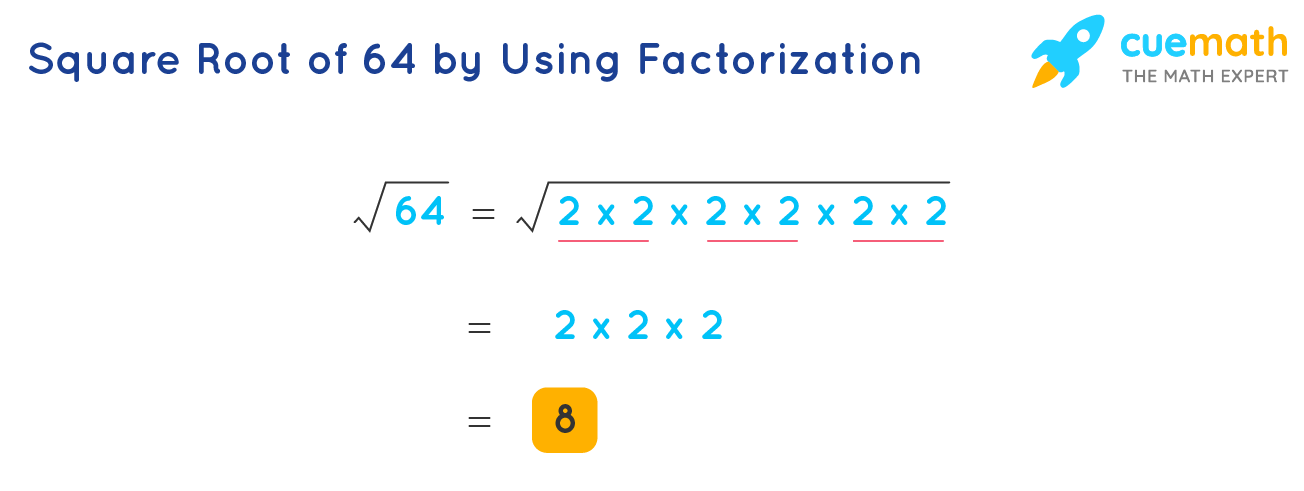Topic simplify square root of 600: Learn how to simplify the square root of 600 with our easy, step-by-step guide. This comprehensive article will walk you through the process, from prime factorization to expressing the result in simplest form. Perfect for students and math enthusiasts, this guide makes simplifying square roots straightforward and understandable.
Table of Content
- Simplifying the Square Root of 600
- Introduction
- What is the Square Root?
- Prime Factorization Method
- Finding the Prime Factors of 600
- Grouping Factors in Pairs
- Simplifying the Radicals
- Expressing in Simplified Radical Form
- Decimal Form of the Square Root
- Exponent Form of the Square Root
- Why the Square Root of 600 is Irrational
- Additional Examples
- FAQs on Square Root of 600
- YOUTUBE: Khám phá cách tính căn bậc hai của 600 một cách đơn giản và dễ hiểu. Video hướng dẫn chi tiết giúp bạn nắm vững kiến thức toán học.
Simplifying the Square Root of 600
To simplify the square root of 600, follow these steps:
Step-by-Step Process
- Prime Factorization: Find the prime factors of 600.
- 600 = 23 × 3 × 52
- Group the Factors: Group the factors in pairs of the same number.
- 600 = (2 × 2) × (5 × 5) × (2 × 3)
- Simplify the Radicals: Take the square root of each group of pairs.
- √600 = √(22 × 52 × 6)
Therefore, the simplified form of the square root of 600 is:
√600 = 10√6
Decimal Form
The square root of 600 in decimal form is approximately:
√600 ≈ 24.4949
Exponent Form
The square root of 600 in exponent form is:
6001/2 = 10 × 61/2
Conclusion
By following the steps above, we can simplify the square root of 600 to its simplest radical form as 10√6.

READ MORE:
Introduction
Simplifying the square root of 600 involves breaking it down into its prime factors and identifying any perfect squares. The square root of 600 can be expressed in its simplest radical form as \(10 \sqrt{6}\). This process not only makes calculations easier but also helps in understanding the properties of the number better.
To simplify \(\sqrt{600}\), we start by factoring 600 into its prime components:
- Prime factorize 600: \(600 = 2^3 \cdot 3 \cdot 5^2\).
- Group the prime factors into pairs: \(600 = (2^2 \cdot 5^2) \cdot (2 \cdot 3)\).
- Simplify the groups: \(\sqrt{600} = \sqrt{(2^2 \cdot 5^2)} \cdot \sqrt{(2 \cdot 3)}\).
- Take the square root of the perfect squares: \(\sqrt{600} = 10 \cdot \sqrt{6}\).
Thus, the simplified form of \(\sqrt{600}\) is \(10 \sqrt{6}\). This method highlights the importance of identifying and using perfect squares to simplify square roots efficiently.
What is the Square Root?
The square root of a number is a value that, when multiplied by itself, gives the original number. For example, the square root of 600 is denoted as √600. It represents a number that, when squared (multiplied by itself), results in 600.
When dealing with square roots, there are two types of results: exact and approximate. Exact square roots are expressed as radicals (√), while approximate square roots are expressed as decimal numbers.
- To find the square root of a number, one can use various methods such as prime factorization, estimation, or using a calculator for complex numbers.
- The square root of 600 is an irrational number, meaning it cannot be expressed as a simple fraction and has an infinite number of decimal places without repeating.
Prime Factorization Method
The prime factorization method is a systematic approach to finding the square root of a number by breaking it down into its prime factors.
To simplify the square root of 600 using prime factorization:
- Start by dividing 600 by the smallest prime number, 2, repeatedly until you can no longer divide evenly. This gives you the factorization: 600 = 2 × 2 × 2 × 3 × 5 × 5.
- Group the factors into pairs of identical numbers: √600 = √(2 × 2 × 2 × 3 × 5 × 5).
- Take one number from each pair outside the square root: √600 = 2 × 5 × √(2 × 3).
- Further simplify inside the square root if possible: √600 = 2 × 5 × √(6).
Therefore, the simplified square root of 600, using the prime factorization method, is 10√6.
Finding the Prime Factors of 600
Finding the prime factors of 600 involves identifying the prime numbers that multiply together to result in 600.
- Start with the smallest prime number, 2, and divide 600 by 2. Since 600 is even, divide by 2 again: 600 ÷ 2 = 300.
- Continue dividing by 2 until you can no longer divide evenly: 300 ÷ 2 = 150, 150 ÷ 2 = 75.
- Next, divide by the next smallest prime number, 3: 75 ÷ 3 = 25.
- Continue dividing by 3 until you can no longer divide evenly: 25 ÷ 5 = 5.
- Lastly, since 5 is a prime number, divide 5 by itself: 5 ÷ 5 = 1.
Therefore, the prime factors of 600 are 2, 2, 2, 3, 5, and 5.

Grouping Factors in Pairs
After finding the prime factors of 600, the next step is to group them in pairs of identical numbers.
The prime factorization of 600 is: 600 = 2 × 2 × 2 × 3 × 5 × 5.
| Pair 1: | 2 × 2 = 4 |
| Pair 2: | 5 × 5 = 25 |
| Remaining Factor: | 3 |
Grouping the factors in pairs simplifies the expression inside the square root.
Simplifying the Radicals
Once the factors of 600 are grouped in pairs, simplify the radicals by taking one number from each pair outside the square root.
| Simplified Form: | √(4 × 25 × 3) |
| Calculate Inside the Square Root: | √(4 × 25 × 3) = √300 |
Therefore, the simplified form of √600 is √300.
Expressing in Simplified Radical Form
To express the square root of 600 in its simplified radical form, follow these steps:
-
Find the prime factors of 600:
\[
600 = 2^3 \times 3^1 \times 5^2
\] -
Group the factors into pairs of equal factors:
\[
600 = (2^2 \times 5^2) \times (2 \times 3)
\] -
Take one factor from each pair outside the radical:
\[
\sqrt{600} = \sqrt{(2^2 \times 5^2) \times (2 \times 3)} = 2 \times 5 \times \sqrt{2 \times 3}
\] -
Simplify the expression:
\[
\sqrt{600} = 10 \sqrt{6}
\]
Therefore, the simplified radical form of the square root of 600 is \( 10 \sqrt{6} \).
Decimal Form of the Square Root
The decimal form of the square root of 600 is approximately 24.494897427832.
Here is a step-by-step method to understand and calculate the decimal form of the square root of 600:
-
Using a Calculator: The simplest method to find the square root of 600 is by using a calculator. Inputting 600 and pressing the square root button will yield approximately 24.4949.
-
Using a Computer or Spreadsheet: You can use programs like Excel or Google Sheets with the SQRT function. For example, in Excel, you can enter
=SQRT(600)to get approximately 24.494897427832. -
Manual Calculation (Long Division Method): This method involves several steps:
- Set up 600 in pairs of digits from right to left: 6, 00, 00.
- Find the largest perfect square less than or equal to the first pair (6). This is 4 (since 22 = 4). Write 2 above and subtract 4 from 6 to get 2.
- Bring down the next pair of digits (00), giving you 200.
- Double the number above (2 becomes 4), and determine how many times 40 goes into 200. Write this quotient next to the 2 above and subtract the product from 200.
- Repeat this process until you have the desired number of decimal places.
Following these steps will approximate the square root of 600 as 24.4949.
-
Approximation and Rounding: The value of √600 can be rounded to different decimal places for simplicity. For example:
- To the nearest whole number: 24
- To the nearest tenth: 24.5
- To the nearest hundredth: 24.49
- To the nearest thousandth: 24.495

Exponent Form of the Square Root
When expressing the square root of 600 in exponent form, we can use the property that the square root of a number is the same as raising that number to the power of one-half.
Here is the step-by-step process to convert the square root of 600 to its exponent form:
- First, recognize that the square root of a number \( n \) can be written as \( n^{1/2} \).
- Thus, the square root of 600 can be written as \( 600^{1/2} \).
- To simplify further, we can factor 600 into its prime factors:
- \( 600 = 2^3 \times 3 \times 5^2 \)
- Using the properties of exponents, we can rewrite the expression:
- \( 600^{1/2} = (2^3 \times 3 \times 5^2)^{1/2} \)
- This can be simplified using the exponent rule \( (a \times b)^{c} = a^{c} \times b^{c} \):
- \( (2^3)^{1/2} \times 3^{1/2} \times (5^2)^{1/2} \)
- Simplify each term individually:
- \( 2^{3/2} \)
- \( 3^{1/2} \)
- \( 5^{2/2} = 5 \)
- Combine the simplified terms:
- \( 2^{3/2} \times 3^{1/2} \times 5 \)
- Finally, you can express this as:
- \( 10 \times 6^{1/2} \)
Therefore, the exponent form of the square root of 600 is \( 600^{1/2} \) or \( 10 \times 6^{1/2} \).
Why the Square Root of 600 is Irrational
The square root of 600 is considered irrational because it cannot be expressed as a simple fraction of two integers. This stems from the properties of its prime factors.
Let's break down why:
- First, we perform the prime factorization of 600:
- 600 = 2^3 × 3^1 × 5^2
- For a number to have a rational square root, all prime factors must have even powers. This is because pairs of prime factors can be taken out of the square root.
- In the prime factorization of 600, the prime factor 2 is raised to the power of 3, which is an odd number.
- This means that there is an unpaired prime factor (2 in this case) inside the square root, making it impossible to simplify 600 into a product of pairs of integers.
- Since we can't pair all the prime factors, the square root of 600 cannot be expressed as a fraction, thereby classifying it as an irrational number.
To summarize, the presence of an unpaired prime factor in the factorization of 600 confirms that its square root is irrational.
Additional Examples
Here are some additional examples of how to simplify square roots:
Example 1: Simplify the Square Root of 200
- Find the prime factors of 200:
- 200 = 2 × 2 × 2 × 5 × 5
- Group the factors in pairs:
- 200 = (2 × 2) × (5 × 5) × 2
- Take one factor from each pair:
- \(\sqrt{200} = 2 × 5 × \sqrt{2} = 10\sqrt{2}\)
Example 2: Simplify the Square Root of 450
- Find the prime factors of 450:
- 450 = 2 × 3 × 3 × 5 × 5
- Group the factors in pairs:
- 450 = (3 × 3) × (5 × 5) × 2
- Take one factor from each pair:
- \(\sqrt{450} = 3 × 5 × \sqrt{2} = 15\sqrt{2}\)
Example 3: Simplify the Square Root of 72
- Find the prime factors of 72:
- 72 = 2 × 2 × 2 × 3 × 3
- Group the factors in pairs:
- 72 = (2 × 2) × (3 × 3) × 2
- Take one factor from each pair:
- \(\sqrt{72} = 2 × 3 × \sqrt{2} = 6\sqrt{2}\)
Example 4: Simplify the Square Root of 98
- Find the prime factors of 98:
- 98 = 2 × 7 × 7
- Group the factors in pairs:
- 98 = (7 × 7) × 2
- Take one factor from each pair:
- \(\sqrt{98} = 7 × \sqrt{2} = 7\sqrt{2}\)
FAQs on Square Root of 600
- What is the square root of 600?
The square root of 600 is approximately 24.4949 in decimal form and can be simplified to \( 10\sqrt{6} \) in radical form.
- Is the square root of 600 a rational number?
No, the square root of 600 is an irrational number because it cannot be expressed as a simple fraction.
- How do you simplify the square root of 600?
- Factor 600 into its prime factors: \( 600 = 2^3 \cdot 3 \cdot 5^2 \).
- Group the factors in pairs: \( \sqrt{600} = \sqrt{(2^2 \cdot 5^2) \cdot 2 \cdot 3} \).
- Take the square root of the perfect squares: \( \sqrt{600} = 10\sqrt{6} \).
- Can the square root of 600 be simplified further?
No, \( 10\sqrt{6} \) is the simplest radical form of the square root of 600.
- What is the exponent form of the square root of 600?
The square root of 600 can be expressed in exponent form as \( 600^{1/2} \).
- Why is the square root of 600 irrational?
The square root of 600 is irrational because it includes the square root of 6, which is not a perfect square and thus cannot be simplified to a rational number.

Khám phá cách tính căn bậc hai của 600 một cách đơn giản và dễ hiểu. Video hướng dẫn chi tiết giúp bạn nắm vững kiến thức toán học.
Căn bậc hai của 600
READ MORE:
Tìm hiểu cách tính và đơn giản hóa căn bậc hai của 600y^23 một cách dễ dàng. Video hướng dẫn chi tiết và rõ ràng.
Căn bậc hai của 600y^23, đơn giản hóa

















